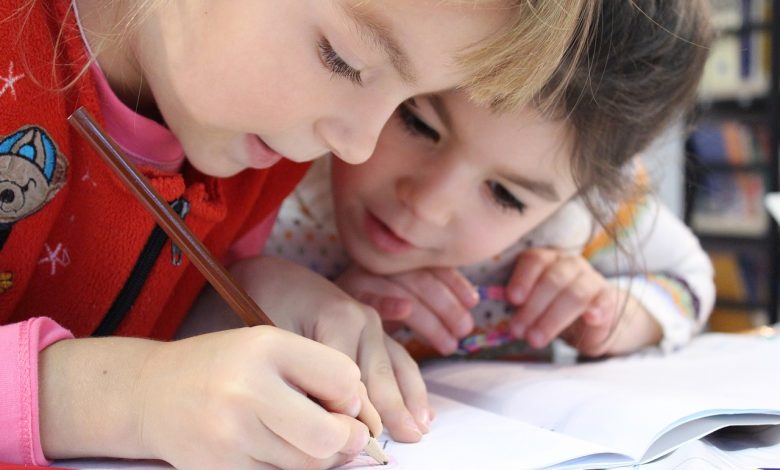
The Write A Book in A Day competition began back in 2002 as an initiative by the Katharine Susannah Prichard Writers Centre in the east of Perth to raise funds for the Princess Margaret Hospital for Children. In its first year, eighteen teams took part in the event. The goal was for a group of writers, using specific keywords and parameters, to write and illustrate a picture book within a 12-hour period.
By 2014, the annual competition attracted over 450 teams and raised over $100,000, which was shared between children’s hospitals in every Australian state and territory. In 2015, The Kids’ Cancer Project took over the running of the ever-growing competition and in 2022, more than 11,000 writers wrote over 1,500 books and raised almost $800,000 for childhood cancer research.
School stories
Due to the increasing popularity of the competition, there are now five divisions. Primary (Years 5-6), Middle secondary (Year 7-9), Upper secondary (Years 10-12), Open (18 years+) and Corporate (18 years+ with a corporate sponsor). Prizes are awarded across all categories
Kimberley Chapple is the Head of Campaigns at The Kids’ Cancer Project and oversees the Write A Book in A Day competition. “Every year, thousands of writers across Australia prove that you can write a book in a day as they challenge themselves to do just that. We provide resources to help plan, breaking down the day hour-by-hour, including brainstorming, breaks and editing time suggestions.”
School teams must be coordinated by a teacher, librarian or other supervising adult but they cannot participate in the writing (teams with adult participants must enter in the Open category). Teams must consist of between five to ten members, and schools can enter more than one team.
Renee Sanson from Kings Christian College, Queensland was team coordinator for a group of nine Year 6 students who took out both the Best Book and Best Illustrated Book prizes for their division (QLD/NT) as well as the national prize for Plan Bee in 2022. “We made the book an enjoyable read where readers could learn fun facts about bees and native Australian plants in the footnotes,” Renee explains. “The greatest thing about writing a book in a day from a teacher’s perspective is to see how well the students can get all of their amazing, creative ideas and refine them down to a solid storyline and then plan and develop it as a team.”
A long literary day
Teams must nominate their writing date in advance, which can be any time across the four-month competition period from June 1 to September 30, 2023. Writing parameters will be sent to teams depending on their writing day, so no preparation can be done in advance. The parameters include two human characters, a non-human character, a setting and an issue plus five words assigned at random.
All books, regardless of whether it is written by a primary age team or a corporate team must be suitable for a readership of 10 to 16 years, as the finished masterpieces are uploaded into a digital library and made available to children’s hospitals around Australia.
Writing starts at 8am and must conclude by 8pm. Coordinators then have one hour to submit the finished book online. Teams can choose to take less than 12 hours, and amongst the many tools and guides provided is a 9.5 hour plan. But it’s a long day by any measure and certainly requires going above and beyond by both student participants and their coordinators.
“I enjoy spending quality time with the students during the 12 hours – building relationships with them and guiding some of them 1:1 on their mindset and communication skills,” says Renee. “The students not only learned how to write a book in a day, but they also learned how to learn from one another, how to take into account others’ perspectives and to have a voice and choice in the way the story should go and also how the characters should look and act.”
Unexpected benefits
The competition is foremost a fundraiser, with each team paying a $70 registration fee and raising a minimum of $240, which goes directly to the national Kids Cancer Project charity. However, there are many other outcomes and benefits for students.
Kimberley Chapple says: “Writing with peers helps to develop many skills including teamwork – collaboration, problem-solving and delegation during the brainstorming phase and communication and accountability throughout the writing and illustrating. I also speak a lot about the resilience and sense of accomplishment – to commit yourself and concentrate on a project for the whole day is a wonderful achievement that few can say they’ve accomplished.”
“Central to the competition is the sense of altruism, yes there are prizes on offer, but ultimately, it’s kids helping kids, with students writing these books knowing they are making a difference for kids with cancer. I recall a comment from a teacher in a previous year who said, “I love the writing… and watching the great ‘fishbowl’ where the kids collaborate, debate, and create. It’s such a positive, lasting experience for all involved.” Kimberley Chapple
Sienna Jessop, now in Year 7, was part of the winning team in 2022. While the activity of writing may be done every day in a class environment, the experience of participating in the competition provides a unique and unforgettable school memory: “The greatest thing about Write A Book in a Day was the new experiences. I learned how to work with a group and how to have fun but still be able to get things done. The things that I learned I will always remember.”
Tips from the pros
“My first tip is to not worry if you aren’t the best writer or the best drawer and to give it a shot,” says student Sienna Jessop. “My second tip is to give your ideas and don’t hold back everyone’s ideas are valuable. And my third tip is to have fun, and enjoy this experience because you might not be able to do it again.”
Campaign manager Kimberley Chapple recommends looking at the Online Library to see the previous year’s submissions and winners.
Teacher Renee Sanson offers the following advice: “Use most of the time to really plan out the story. What are the problems? How do the characters speak, interact and what are their strengths and weaknesses? Have fun – spend time having brain breaks. Read the book out loud so the students can hear it for them to be able to pick up any errors and give their feedback.”
“Look for the gold in the students prior to choosing your team. It’s not always about getting what seem to be the best students at that time, but it is about fostering the talent that you may see in some of them and giving them the opportunity to show off that talent.” Renee Sanson
The Write A Book in A Day competition is now open, and teams can compete any time before September 30. More information can be found on the website at Write a Book In a Day







